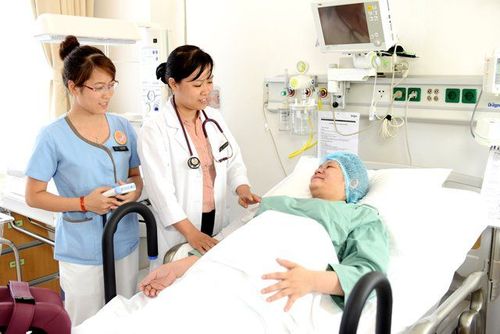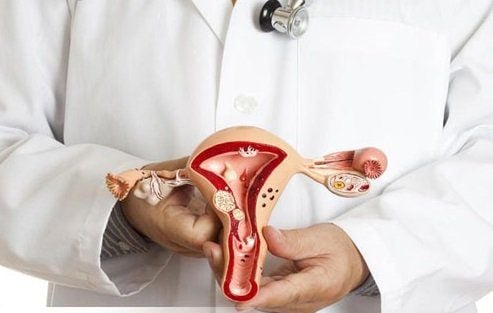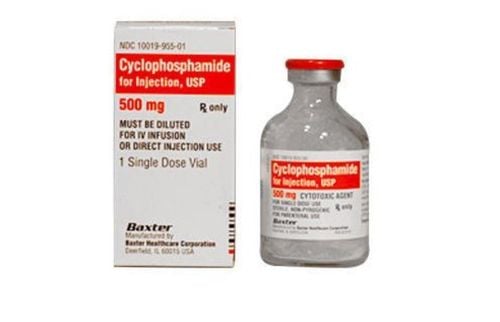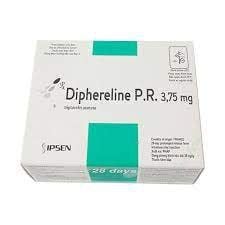This is an automatically translated article.
The degree of inflammation of pelvic inflammatory disease often progresses heavily, can leave long-term sequelae, treatment of pelvic inflammatory disease needs to be aggressive and urgent right from the start, both to improve symptoms and to moderate shrink the infection.
1. Consider how to approach the treatment of pelvic inflammatory disease?
Treatment of pelvic inflammatory disease is aimed at resolving acute symptoms, eliminating the current infection, and minimizing the risk of long-term sequelae. The adverse effects of pelvic inflammatory disease in women, including chronic pelvic pain, ectopic pregnancy, and tubal-induced infertility, or embryo implantation failure after IVF, can occur. occur in up to 25% of patients.
In addition to treating patients with the goal of quickly eliminating the infection as well as reducing the risk of transmitting the disease to sexual partners, screening for the possibility of infection from sexual partners to treat but but for both is extremely important. This is the basic foundation for the effective treatment of pelvic inflammatory disease, minimizing the risk of recurrence in the future.
In general, when there are signs of pelvic inflammatory disease and it has been diagnosed, the earlier treatment is initiated, the greater the benefit for the patient, especially the ability to preserve reproductive function. In which, antibiotic treatment alone is the core, solving most cases of pelvic inflammatory disease in women. In addition, patients may be considered for surgical intervention if pelvic inflammatory disease is complicated by an abscess or to repair obstructive scar healing lesions.

Có nhiều nguyên nhân khác nhau gây viêm vùng chậu
2. Antibiotics in the treatment of pelvic inflammatory disease
Right in the emergency department or specialist clinic, antibiotic treatment of pelvic inflammatory disease should be started as soon as it is beneficial for the patient. In particular, the physician should give the patient an oral dose immediately after taking the specimen with empiric broad-spectrum antibiotics, capable of fully controlling common organisms such as chlamydia or gonorrhea as well as against other organisms. Gram-negative, anaerobic and streptococci pathogens.
For HIV-coinfected women, the antibiotic of choice is the same for HIV-negative women. Similarly, there is no difference in route of administration between intravenous and oral administration if the drug has high bioavailability. If the patient is on initial intravenous therapy, oral antibiotics can be switched 24 hours after clinical improvement and continued for a total of 14 days.
3. How to monitor the effectiveness of the treatment of pelvic inflammatory disease?
Most patients show a clinical response that will begin within 48 to 72 hours of medical treatment for pelvic inflammatory disease. If the patient continues to have fever, chills, pelvic or lower back pain, reassess the effectiveness of the antibiotics being given and consider other possible causes or perform a diagnostic laparoscopy.
Treatment of sexual partners improves the effectiveness of the treatment of pelvic inflammatory disease. This applies to all people who have had sex with an infected person within 60 days even if the woman has not yet shown any symptoms.
In addition, even with a full regimen of pelvic inflammatory disease treatment, if pelvic inflammatory disease caused by chlamydia or gonorrhea is diagnosed, the woman should continue to be followed up with repeat testing within 3 to 6 months. . The reason is that because these women have a high rate of re-infection within 6 months of treatment, adolescents are more likely to relapse than adults. Therefore, early screening aims to take measures to continue treatment and follow-up.
In addition, pelvic inflammatory disease in women should be advised to abstain from sexual activities during treatment. Another potentially acceptable measure is to use safety precautions until the regimen is complete and symptoms have completely ceased.
4. When does pelvic inflammatory disease require hospitalization?
Most patients with pelvic inflammatory disease can be treated in the clinic without needing to be hospitalized. However, inpatient treatment should be considered for patients with the following:
Unknown diagnosis Complications pelvic abscess detected on ultrasound Pregnancy Intolerance to antiretroviral regimen outpatient oral delivery. Having severe comorbidities Having predisposition to congenital or acquired immunodeficiency such as HIV-infected patients with low CD4 counts or patients taking immunosuppressive drugs. No clinical improvement after 72 hours of outpatient treatment.

Bệnh nhân bị viêm vùng chậu nên đến bệnh viện để được thăm khám và điều trị kịp thời
5. How is surgical intervention in the treatment of pelvic inflammatory disease?
When condition does not improve within 72 h of antibiotic therapy, the patient should be re-evaluated for antibiotic adjustment or endoscopic intervention, surgical dissection of the inflammatory mass or possible diagnoses of the disease. other. General surgical intervention can not only help drain the abscess, clear the infection, and dissolve the adhesions, but also help clarify if the diagnosis is in doubt.
Surgical intervention can be through laparoscopic or open surgery. The advantages of laparoscopy are that it allows direct imaging of the pelvic cavity while minimally invasive. However, laparoscopy is not always appropriate, especially when a patient with pelvic inflammatory disease progresses to acute complications.
Regardless of the method, if the extent of the damage caused by the inflammation is too severe, the problem of removing organs and parts before posing needs to be carefully considered. Specifically, optimizing the preservation of the uterus when the patient still wishes to get pregnant, preserving the ovaries to maintain the source of female hormones...
In short, pelvic inflammatory disease in women is completely possible. cure. However, it is necessary to adhere to a sufficient duration of antibiotic treatment, minimize risk factors favorable for infection as well as coordinate treatment for sexual partners, and periodically monitor treatment results thereafter. highly effective treatment, limiting the risk of re-infection and long-term sequelae.
In order to help customers detect and treat other gynecological diseases early, Vinmec International Hospital has a basic gynecological examination and screening package, helping customers detect early inflammatory diseases Easy, inexpensive treatment. Screening detects gynecological cancer (cervical cancer) early even when there are no symptoms.
Please dial HOTLINE for more information or register for an appointment HERE. Download MyVinmec app to make appointments faster and to manage your bookings easily.













